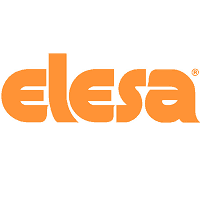Safety regulations play a crucial role in equipment selection in industries where explosive atmospheres are a risk. The ATEX directive, established by the European Union, ensures that components used in such environments meet strict safety standards. Elesa offers a range of ATEX-compliant solutions designed for industries like oil and gas, chemical processing, and manufacturing, where explosive risks are present.
What is ATEX?
ATEX (Atmospheres Explosible) refers to two EU directives regulating equipment used in explosive atmospheres:
ATEX-classified areas contain combustible gases, vapours, or dust, necessitating components designed to prevent ignition sources and maintain operational integrity.
The Role of ATEX-Compliant Components
Components used in ATEX environments must minimise risks such as static electricity, mechanical sparks, and high surface temperatures. Elesa provides various solutions designed for these conditions, ensuring compliance with ATEX guidelines while maintaining durability and performance.
Key Features of ATEX-Certified Elesa Products
Applications of ATEX-Compliant Components
Elesa’s ATEX solutions serve various industries requiring safety in hazardous zones. Common applications include:
Oil & Gas
In oil and gas operations, safety is paramount due to the presence of flammable gases and volatile substances. ATEX-certified control elements such as handwheels and levers are used in drilling rigs and pipeline valves to prevent accidental sparks. Handles and hinges with anti-static properties are installed in offshore platforms and refineries to mitigate explosion risks.
Equipment such as pumps and compressors in the oil and gas industry must operate without generating sparks. ATEX-compliant anti-vibration elements help stabilise machinery and reduce mechanical friction that could lead to potential hazards.
Chemical Processing
Chemical plants handle various reactive substances that can produce combustible atmospheres. ATEX-compliant level indicators ensure accurate monitoring of liquid levels in storage tanks, preventing overflows that could lead to hazardous situations. Anti-vibration elements are utilised in mixing equipment to minimise mechanical friction, reducing the potential for static build-up.
Additionally, chemical processing plants often require ATEX-rated enclosures for housing electrical components, ensuring no sparks are produced in highly sensitive areas. Ventilation systems equipped with ATEX-certified components help control the dispersion of flammable gases, maintaining a safe working environment.
Food & Pharmaceutical
Many foods and pharmaceutical production environments generate fine dust particles, which can form explosive dust clouds. Sealed hinges and rotary controls prevent dust ingress in processing equipment, ensuring continuous, safe operation. Clamping levers and locking mechanisms used in milling and grinding systems enhance safety by reducing unintended movement.
Dry food production, such as flour milling, involves large quantities of airborne dust, which increases the risk of explosion. ATEX-certified components, such as anti-static conveyor rollers, ensure materials move efficiently without generating static electricity, which could ignite fine particles.
Mining Operations
Mining environments contain a variety of ignition hazards, from methane gas pockets to coal dust accumulation. ATEX-compliant components such as sealed plugs and control elements are used in heavy machinery to prevent electrical sparks. Corrosion-resistant hinges and fasteners are implemented in underground ventilation systems to maintain operational integrity under extreme conditions.
In underground operations, equipment such as rock crushers and drill rigs must use ATEX-certified components to prevent accidental ignition. Specialised lighting systems designed with ATEX-compliant materials ensure visibility while mitigating risks associated with flammable gas pockets.
Power Generation
Renewable energy facilities, including biomass and hydrogen plants, often deal with combustible gases. ATEX-rated control panels and indicator plugs enable safe operation by preventing electrical faults that could trigger an explosion. Elesa’s robust construction ensures that these components withstand high temperatures and harsh environmental conditions.
Hydrogen fuel cells, a growing sector in the renewable energy market, require ATEX-compliant fittings and fixtures to ensure safety in high-risk environments. ATEX-approved pressure valves are critical in these applications to maintain controlled hydrogen flow without leaks that could lead to combustion.

Elesa’s ATEX-Compliant Product Range
Elesa offers a selection of ATEX-certified components, including:
Case Study: Enhancing Safety in Chemical Processing
A European chemical manufacturing plant required durable, ATEX-certified control elements for their mixing and storage equipment. Elesa provided electrostatically safe handwheels and level indicators, significantly reducing the risk of static discharge and operational failures. The plant reported improved safety compliance and reduced downtime due to reliable component performance.
In addition, the facility upgraded its ventilation system with ATEX-rated exhaust fans, which helped control hazardous fumes and ensure proper airflow within confined processing areas. This holistic approach to ATEX compliance improved operational efficiency and created a safer working environment for employees.
Compliance and Certification
All Elesa ATEX components undergo rigorous testing to meet the highest safety standards. Compliance with EN 60079 ensures suitability for explosive atmospheres, while independent certifications confirm adherence to ATEX classifications. Certification bodies conduct stringent testing to evaluate resistance to ignition sources, pressure build-up, and material degradation under extreme conditions.
Routine compliance assessments and regular maintenance checks ensure that ATEX-certified components continue to perform optimally. Companies operating in high-risk environments must follow strict documentation procedures to verify compliance and maintain safety standards.
Best Practices for ATEX Component Selection
When selecting ATEX-certified components, consider the following factors:
ATEX compliance is essential for ensuring workplace safety in explosive environments. Elesa’s range of certified components provides industries with reliable, durable, and regulation-compliant solutions. By choosing ATEX-certified parts, businesses mitigate risks while maintaining operational efficiency in hazardous conditions.
Elesa continues to innovate in ATEX-certified solutions, expanding its product offerings to meet the evolving needs of safety-conscious industries. As safety regulations evolve, investing in compliant components will remain a top priority for businesses operating in high-risk sectors.












Emergency law passed to protect UK steelmaking
There is an old legal adage ´hard cases make bad law´ and it seems to apply to this draconian legislation, which gives sweeping powers to the...